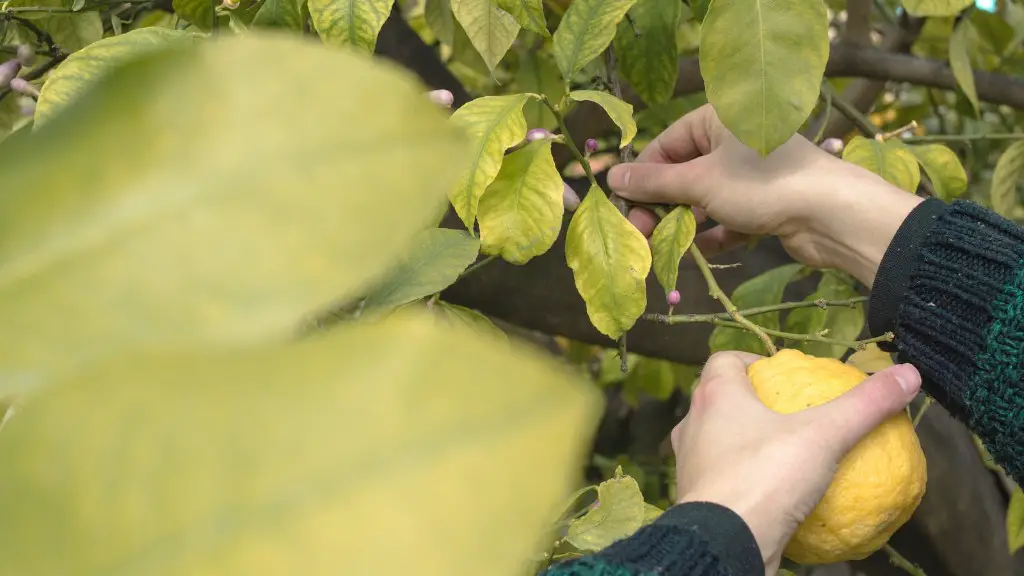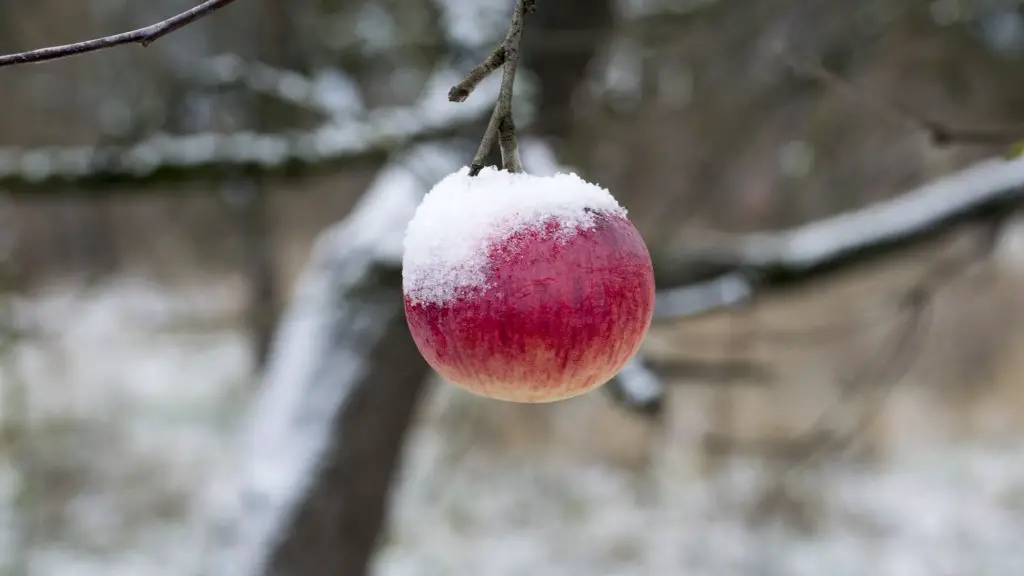Growing lemon trees in pots has lately become a popular choice for garden owners, as it allows one to reap the harvest of these gorgeous citrus fruits without having to worry about large spaces in the garden. Growing lemon trees indoors has become even easier due to the increasingly sophisticated self-watering pots now available. That being said, taking care of a lemon tree in a pot can still be relatively tricky and necessitate a certain amount of commitment. Here are some tips on how to grow a healthy lemon tree in a pot.
Understanding The Needs of a Lemon Tree
In order to ensure a healthy lemon tree in a pot, it is crucial to do your research prior to planting it. Lemon trees love the sun and need as much direct sunlight as possible – this should be taken into consideration when choosing the location to place your lemon tree. Potted lemon trees have relatively shallow roots, so they will expect regular re-potting. Before embarking on this journey, it is also important to select the right pot to plant your lemon tree in. It is generally advised to opt for a pot with adequate drainage holes and a size of about 18-inches for a mature tree.
Caring for a Lemon Tree In A Pot
It is easy to overestimate the hardiness of a lemon tree – but it is important to treat it right if you wish to avoid losing your entire harvest due to disease or pests. If a lemon tree is kept in its original pot, it will expect a fresh layer of nutrient-filled fertilizer every six months or so to remain healthy. As with every plant, it needs plenty of water – however, as lemon trees hate being waterlogged, regular monitoring is essential. Lastly, it is advisable to give your lemon tree adequate rest in winter – if possible avoid feeding or pruning them especially during the coldest times of the year.
Pest and Disease Control for Lemon Tree in Pot
Lemon trees in pots tend to attract an array of diseases such as Citrus Canker, Gill Midge, and Alternaria Brown Spot. These can cause immense damage to the tree and should be treated as soon as they have been spotted. Prevention is, as always, better than cure, and weekly washing of the leaves with a diluted liquid soap solution can help your lemon tree not to become a target of most fungal issues. Additionally, it is important to understand that pests such as caterpillars and aphids will be attracted to the flowers of the lemon tree and should be disposed of swiftly.
Pruning Lemon Trees In Pot
The natural shape of a lemon tree has been the inspiration behind many an artist’s works and thus, it is important to keep pruning at a minimum – this will help to maintain the tree’s natural beauty. Pruning towards the inside is necessary every once in a while in order to help with air flow and also to allow space for fruits to develop, as a tree with congested branches will inevitably drop some of the fruits before they have ripened.
Harvesting Lemons from a Tree in a Pot
Harvesting lemons can be a tricky task and requires a certain amount of experience in discerning when the fruits are ready to be picked. As ripe lemons appear yellow even if they are still green, it is important to rely on the feel of the fruits as a better indication. Lemons should be plucked gently but firmly, and they will eventually fall when they are ready. If all goes as it should, a single healthy pot will provide a small to moderate-sized harvest of lemons for multiple years.
Disease Prevention for Lemon Trees in A Pot
In order to keep lemon trees in a pot from falling victim to pests and diseases, it is essential to avoid wetting their leaves while watering them. As water on their leaves can be a breeding ground for many types of fungus and insects, it is best to water the tree in the morning and give its foliage the opportunity to absorb the sun’s rays and completely dry out. Additionally, to avoid fungal and bacterial diseases, it is important to ensure that the potting soil is changed when replanting and that all tools used to prune the tree are fully sterilized.
Eliminating Pests From Lemon Trees In A Pot
A lemon tree in a pot can quickly become overwhelmed with a variety of insects, from aphids and mites to scale and whitefly. For small pest issues, a mild soap and water solution can often do the trick and should be used immediately after noticing an infestation. For more serious issues and for those who might not want to take risks, there are plenty of biocontrol agents that can be purchased from any garden center and used on lemon trees in pots.
Proper Sunlight for Lemon Trees In A Pot
Without the right amount of sunlight, lemon trees are unlikely to thrive properly. As these plants require 8 to 12 hours of direct sunlight each day, it is important to place fishing wire screens over their leaves if they would be receiving too much sunlight in a specific spot. On the other hand, if your lemon tree is not getting enough sunlight, you could consider incorporating fluorescent bulbs as a supplement in order to give your tree the sun it calls for.
Fertilization Of Lemon Trees In A Pot
As your lemon tree will not be able to get all its nutritional requirements from the potting soil, it is essential to evenly distribute fertilizer throughout its growing season – this is generally from February to August for most climates around the US. The use of slow-release organic fertilizer is generally recommended, as it allows the tree to absorb the benefits of the nutrients gradually and keeps them from being wasted.
Ensuring Proper Drainage For Lemon Trees In A Pot
Lemon trees in a pot require adequate drainage to ensure that their roots do not become waterlogged. This is critical, as swamped soil can easily lead to root decay and stunt the tree’s growth in the long run. To avoid this problem, it is essential that the pot features enough holes for the surplus water to easily drain away from the sides.

